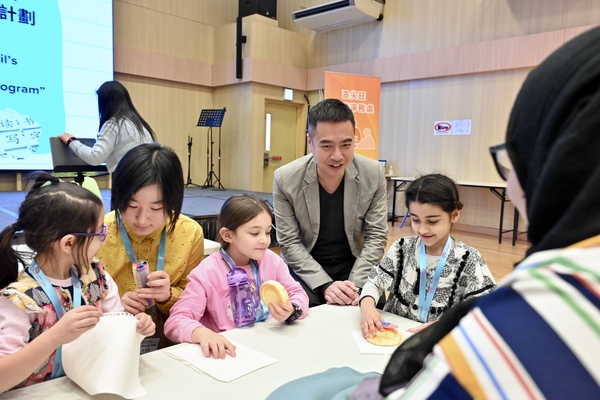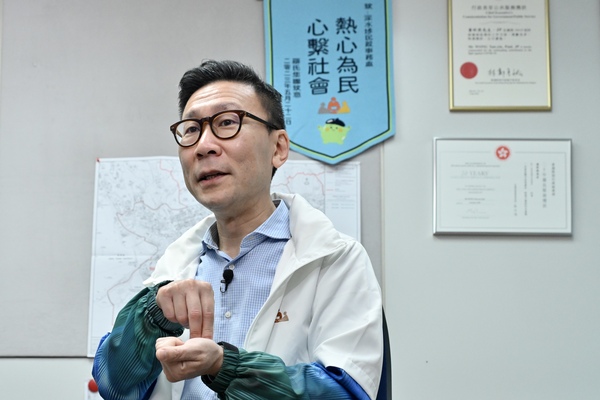Keeping districts close to heart
Hong Kong is divided into 18 districts and each one has a District Officer representing the Government at the district level. District Officers strive to foster communication between the Government and the public, and connect and care for citizens to build a harmonious and inclusive community.
Edward Yu has been serving as a District Officer in Yau Tsim Mong for four years. He described the district as belonging to everyone, not only local residents but also tourists, as it offers a variety of experiences ranging from shopping, sightseeing and dining to culture and heritage.
“You come to our district, Yau Tsim Mong, for shopping and for other economic activities - like you visit our characteristic streets like Jade Street, like Temple Street or others, we have our Goldfish Street, flower market, fruit market. In short, we are a district of diversity. We are a district of different cultures, you can see different faces.”
Inclusive community
Yau Tsim Mong is renowned for its multicultural diversity and harmony, and has the highest proportion of ethnic minority residents among all districts of Hong Kong.
“We see a need for ethnic minorities to learn Putonghua to let them know Chinese culture better and for their better integration into society. Like today, we act as a bridge trying to line up the two sides and work out a successful programme.”
During a visit to the Yau Tsim Mong Multicultural Activity Centre to observe a Putonghua workshop for children from ethnic minority backgrounds, Mr Yu recalled that during a previous communication session, he learnt from the Mindful Mandarins Foundation that they offered similar courses for kindergarten students. He saw the potential of these classes and their suitability for ethnic minority youngsters.
Mr Yu also pointed out that the District Council has approved the transformation of the Reclamation Street Cooked Food Hawker Bazaar - which ceased operation at the end of 2022 - into an inclusive space.
Communication bridge
“I think our district office, like others in other districts, we mainly act as a bridge between government departments and all stakeholders within the district.”
Before assuming the post of District Officer, Mr Yu had the opportunity to work across various policy bureaus. He credits his current role as bringing him great satisfaction as he is able to help in resolving residents’ issues.
“In a policy bureau, all issues are supposed to be citywide and so we have to think bigger, on a larger scale. But in a district, I think the satisfaction for the District Officer or the colleagues in our office is we can see the results easier and faster, and have more direct satisfaction for us, and in turn, provides incentive for us to work harder.”
Fellow District Officer Paul Wong has been working in Sham Shui Po for over three years and works hard to find ways to enhance living in the district for its residents.
“One of the things that I have been working on and I am working on quite hard is to try to integrate or bring technology and data analytics into district services, which is trying to find a new means to address certain long-standing community issues and try to see whether these technological solutions can bring real benefits to the community.”
Liveable district
One of those technological solutions can be found in 15 of the district’s bus stops. They have been installed with wireless radio frequency identification devices to help the visually impaired locate the correct bus stops. When individuals with system identification cards approach the designated bus stop, the system device will emit a sound and announce the bus route.
Mr Wong spearheaded the collaboration between Kowloon Motor Bus and the Society for the Blind, transforming an award-winning project by students from True Light Girls' College into a tangible reality.
“We thought at that time it was quite a good idea. It carried the potential to be actually deployed in our community. And then we have to try to connect or consider what sort of resources are in the community so that we can bring this from a prototype, from an idea, into a real thing.”
He also believes that an important role for a District Officer is to connect different social existing networks within the communities.
“Perhaps people from different networks, they do not know each other, but through our work, we can connect these different networks to kind of hopefully, bring some synergy from combining these different networks together.”



